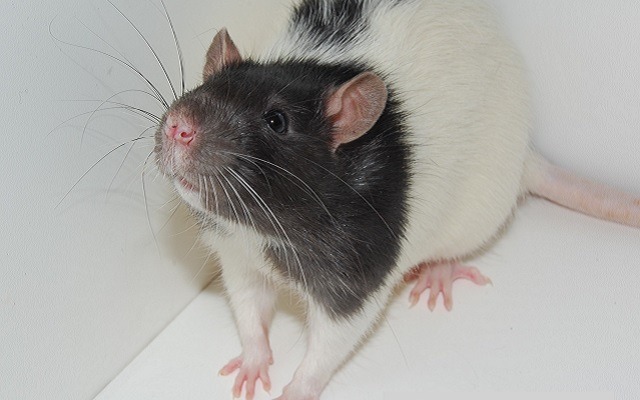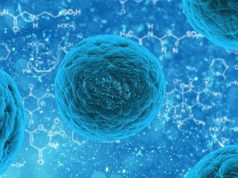
A novel immune-evasive gene therapy has restored skilled grasping function in paralysed rats, allowing treated rodents to independently reach for and pick up sugar cubes, research recently published in Brain reports. The findings of the preclinical study support the ongoing development of chondroitinase ABC (ChABC) gene therapy towards clinical application for the treatment of chronic spinal cord injury in humans.
ChABC—an enzyme that degrades the glial scar tissue that forms around the injury site following damage to the spinal cord—has previously been demonstrated to reverse neurite growth arrest in vivo, enhance central nervous system axonal regeneration and plasticity, and promote functional recovery following a spinal cord injury. This effect has been replicated across multiple laboratories, species, and central nervous system injury models, most recently in a canine clinical trial (also published in Brain).
In this study, the investigators transduced host cells to express the ChABC gene, circumventing the need for repeated, invasive administration of the enzyme. Elizabeth Bradbury (King’s College London, London, UK), who led the research, told The Guardian, “The gene therapy has enabled us to treat large areas of the spinal cord with only one injection. This is important because the spinal cord is long and the pathology spreads down its whole length after injury.”
However, while gene therapy is a promising therapeutic strategy for the treatment of spinal cord injury, the scientific literature reports that uncontrolled gene expression can limit or even reverse any therapeutic benefits. As such, lead author Emily Burnside (King’s College London Regeneration Group, London, UK) and colleagues used the widely clinically available broad-spectrum antibiotic doxycycline to regulate ChABC expression. The administration of doxycycline “switches off” the gene responsible for ChABC production, whilst removal of doxycycline allows for ChABC gene expression.
The authors write, “The ability to both administer and remove any treatment has a key advantage over permanent application in the development of clinically feasible strategies.” They note that, whilst most current clinical applications of gene therapy for treating human disorders are targeted mainly to rare genetic conditions with rapid progressive decline or fatal neurodegenerative diseases, the majority of spinal injured individuals are in a stable condition for the rest of their lives. “Thus”, they continue, “an important safety consideration in the development of gene therapies for spinal cord injury and other long-term neurological disorders is the ability to control transgene expression.” The ability to turn of the treatment is consequently a step in the right direction towards eventual human treatment.
The researchers utilised a novel immune-stealth vector system
A further obstacle to effective treatment with gene therapy is the mammalian adaptive immune response. In previous studies involving doxycycline-induced transgene vectors, when the system has been used in non-human primates, an immune response has been activated and T-cells remove those cells expressing the transgene.
To avoid the issue of immune recognition and removal, the investigators utilised an immune-stealth modification (they fused the transactivator with a glycine-alanine repeat, known to enable some viruses to evade T-cells). So the King’s College team developed an immunologically-inert, doxycycline-inducible gene delivery system to controllably deliver ChABC to injured tissue caused by spinal cord injury.
Treatment with doxycycline-induced ChABC improves mobility
Using this antibiotic to regulate ChABC gene expression, the researchers were able to study the temporal effects of doxycycline-induced ChABC treatment. They found that even short-term treatment is sufficient to gain improvements in ambulation. An assessment of forelimb function requiring the treated rats to walk across a horizontal ladder (a task necessitating sensorimotor integration, according to the study authors), demonstrated improved performance after doxycycline-induced ChABC treatment compared to controls.
Paw placement is more accurate in animals treated with doxycycline-induced ChABC. One-week post-injury, injured rats in the control groups of the study slipped on 81% of their steps, compared to just 51% in those rats given the doxycycline-induced ChABC therapy. The authors report, “This early effect was maintained into the chronic post-injury time points, where there was a significant effect of treatment over time.”
Sustained doxycycline-induced ChABC treatment was found to promote recovery of skilled reaching following cervical contusion injury. All the rats in this study were able to pick up a food pellet in a single reaching movement prior to injury, and all rats were unable to do this one week after spinal cord injury. However, rats in the long-term doxycycline-induced ChABC treatment group improved over time, with improvements over all other treatment groups emerging around four weeks post-injury and continuing thereafter. Eight weeks on from sustaining the spinal cord injury, rats with long-term doxycycline-induced ChABC treatment had a 43.4% success rate at this task, more than double that of any of the other treatment groups. Rats in this group successfully retrieved the pellet almost three times faster than those in the short-term doxycycline-induced ChABC group; this led the study authors to conclude that sustained administration of doxycycline (for eight weeks) may be required to provide sufficient CSPG digestion for significant neuroplasticity of descending systems involved in skilled reaching.
Gene therapy improves physiological conduction
In addition to behavioural end-points, the study investigators set out to assess the physiological conduction properties of the sensory axons traversing the injury site following treatment. Burnside et al found that short-term doxycycline-induced ChABC treatment is sufficient to confer increased conduction. Eight weeks after spinal cord injury, both long-term and short-term doxycycline-induced ChABC treated rats had significantly improved sensory fibre conduction, with a 70.4%±2.3 and 69.3%±4.4 increase, respectively, in the percentage of axons able to conduct through the injury site. However, only long-term treatment led to an increased density of the presynaptic excitatory marker vGlut1+. The authors write that this indicates that “long-term CSPG digestion promotes enhanced innervation by descending motor pathways”.
Burnside et al conclude their work on a positive note: “This preclinical study could have a significant impact for tetraplegic individuals, for whom recovery of hand function is an important determinant of independence, and supports the ongoing development of chondroitinase gene therapy towards clinical application for the treatment of spinal cord injury.”













Would love to read this in simpler English without all the difficult medical terminology so we can all understand what is going on
Hi Simms, The Guardian article mentioned above is quite good. Also here’s a video with an interview with the research team for the test above https://spinalcordresearchandadvocacy.wordpress.com/2018/06/15/gene-therapy-reverses-rats-paralysis-at-kings-college-london/
Thanks Neil.